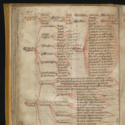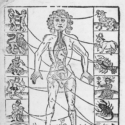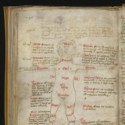Book review: The Visualization of Knowledge in Medieval and Early Modern Europe edited by Marcia Kupfer, Adam S Cohen and J H Chajes, Volume 16 in the Studies in the Visual Culture of the Middles Ages (Brepols Publishers: Tunhout, Belgium, 2020)
Article DOI: https://dx.doi.org/10.15180/221709
Keywords
book review, diagrams, middle ages, The Visualization of Knowledge in Medieval and Early Modern Europe
Combining textual and visual material to modify and amplify meanings has been a feature of written language from its inception. Scribes and artists have always communicated with their audiences through combining letters and graphic elements: spaces between words, rubrics that are larger than the rest of the text, decorated initials and even the structure of columns and lists provide ways for readers to engage with meaning of texts beyond the words themself. Although diagrams were not a new invention in the twelfth century, scribes and artists throughout Europe, mostly working in monastic institutions, began to communicate with their audiences through diagrams to a much greater extent. This period heralded a veritable explosion of diagrams and diagrammatic material best understood as manifestations of pre-modern structures of thought, a visual mode that may appear unintelligible to modern viewers but which nevertheless provides nuanced insights into studies of theology and the history of science alike.
The visual material we now tend to call diagrams did not have a shared name in Latin or vernacular in pre-modern Europe. Sometimes given titles (‘Trees of Consanguinity’ or ‘Squares of Opposition’, for example) and sometimes simply referred to as figura, combinations of lines, words and graphic features to communicate ideas proliferated. In the 1980s Murdoch’s Album of Science: Antiquity and the Middle Ages tackled pre-modern visualisation of concrete and abstract scientific subjects. It is a foundational text that has provided much of the vocabulary and the lens through which diagrams have been discussed since its publication. Murdoch divides the text into practical functions of schemata (mnemonics, facilitation of learning, representative of specific ideas) and under these practical headings he discussed the formal features associated with the different diagrammatic functions.
Since then, there have been many essays and books about diagrams and diagrammatic modes of communication that have grappled with specific types of diagrams (scientific, religious, cosmographic), the function and uses of diagrams (mnemonic, meditative, didactic) and the relationship of the diagram to other types of visual material. The essays in the Visualization of Knowledge further our understanding of these questions within their own subfields, and together the essays provide a basis for studying and understanding diagrammatic material of pre-modern Europe within the textual, codicological and social contexts from which they emerged.
Diagrams, as well as other visual material and organisation of text, pedagogical, devotional, practical or theoretical in function, are all revealing of the contexts in which they were produced, and they challenge historians of pre-modern culture to think about the relationship between the information relayed and the physical shape or form of this information.
This volume takes a broad view of diagrams and visual organisation of textual material and considers marginal illustrations, paratextual additions, images, and lines on scrolls, pages of books or even in the architecture of a church. The book is divided into four parts focusing on different aspects of medieval and early modern visualisations of knowledge. The authors in the first section consider the relationship between diagrams, images and ways of thinking.
The prevalence of diagrams in pre-modern European manuscript and print sources can be explained by their role as active agents in the art of memory. Ars Memoriae was not simply a passive recollection of things past, but rather an active engagement with mnemonic structures that allowed preachers to recall relevant sections of scripture, the devout to be guided in their meditations and scientists to recall and visualise complex medical and astrological information. Writing about the twelfth century theologian Hugh of Saint-Victor and the links between memory and creative thinking, Mary Carruthers focuses on the different types of memory and recollection that medieval scholars engaged in, in light of current understanding of memory as related to cognitive function. She uses this medieval example to extrapolate and discuss memory formation in general. Similarly, Lina Bolzoni discusses the ‘Memory Theatre’ of Guilio Camillo, as well as the antique and medieval origin of this practice. This essay considers use of images to populate a memory theatre and the use of emotion to activate it, creating mnemonic machines, where images were drawn or borrowed from multiple cultural sources. The third essay in this section is by Jeffrey Hamburger, who discusses the function and instrumentality of the diagram, medieval as well as modern. He conceptualises diagrams as machines generating meanings powered by desire. By unpicking the use and function of medieval diagrams Hamburger is able to discuss what the authors and creators of these schemas wanted to communicate and sometimes what the early audiences understood. Together these three essays define diagrams as active tools, rather than static images, used in the creation of memory or the comprehension of new ideas.
The second section considers the ‘iconicity’ of textual material on the page and the ways in which the modification and presentation of text can amend and adapt, support and define the messages conveyed. This approach extends the definition of the diagrammatic and allows the authors to consider the arrangement of textual material as a visual mode of communication in itself. This holistic approach is an important contribution to the field, as we so often tend to consider images or the content of text in isolation.
The layout or structure of textual material in religious books often adhere to the same format. Modern bibles, for example, often present the text in two columns and with running titles on the top of the page to help the reader orient themselves within the book. These are both features that originate in medieval European traditions.
Beatrize Kitzinger discusses the presentation of the text in gospels from around the year 1000, especially two manuscripts produced in the Abbey of Saint-Bertin. By discussing the interplay of images, texts and diagrams across the books, Kitzinger maps a complex understanding of visual literacy and reader-viewer engagement with different folios and material across the codex. Similarly, the next essay also considers how the paratextual apparatus that ‘scaffold’ the texts also conveys and supports its central messages. Here, Lesley Smith discusses the architecture of the manuscript page, focusing particularly on the glossed bibles, a tradition that emerged in the twelfth century. The page layout of twelfth century bibles responded to the needs of the specific audiences: schoolbooks included images to support the pedagogical ends, books for preaching were often presented without images but with symbols connecting different sections, and the pages of scholarly works were structured in a way to aid in memorisation. This was not only a Christian phenomenon, and indeed David Stern discusses the function of the glossed Jewish text, which presented competing voices and perspectives for the reader to analyse. He goes on to demonstrate the late medieval Christian origin of the format of the page of the Talmud Bavli, printed in 1880. Stern shows that the structure and format of the page itself mirrors the relationship of text and images found in Christian material, and traces this development to the Christian publisher Daniel Bomberg who, in the early sixteenth century, printed the glossed Talmud with a non-Jewish audience in mind.
The three essays in the second half of this section focus more closely on what we now may call diagrammatic material. However, this organisation and context places them in a continuum which emphasises how fluid this term must be to modern audiences grappling with it.
Ayelet Even-Ezra discusses the horizontal tree diagrams often found in scholastic treatises and schoolbooks – a type of list where the contents all branch from a common grammatical root. It was popular as it allowed students and authors to make lists and conceptualise relationships between parts. The structure of these types of diagrams shaped the reader’s perception of the content relayed and drawing these horizontal tree diagrams was a part of the scholarly practice itself. For example, the horizontal tree diagram included in a fourteenth century treatise on the urines (bound into a volume with miscellaneous medical treatises) is a witness to the practical function of the diagrams themselves. This diagram maps the relationship between the colour of urine and what internal conditions this demonstrates. The later annotations are also revealing of the continued practical use of this schema; for many years to come readers and users of this manuscript added their own notes.
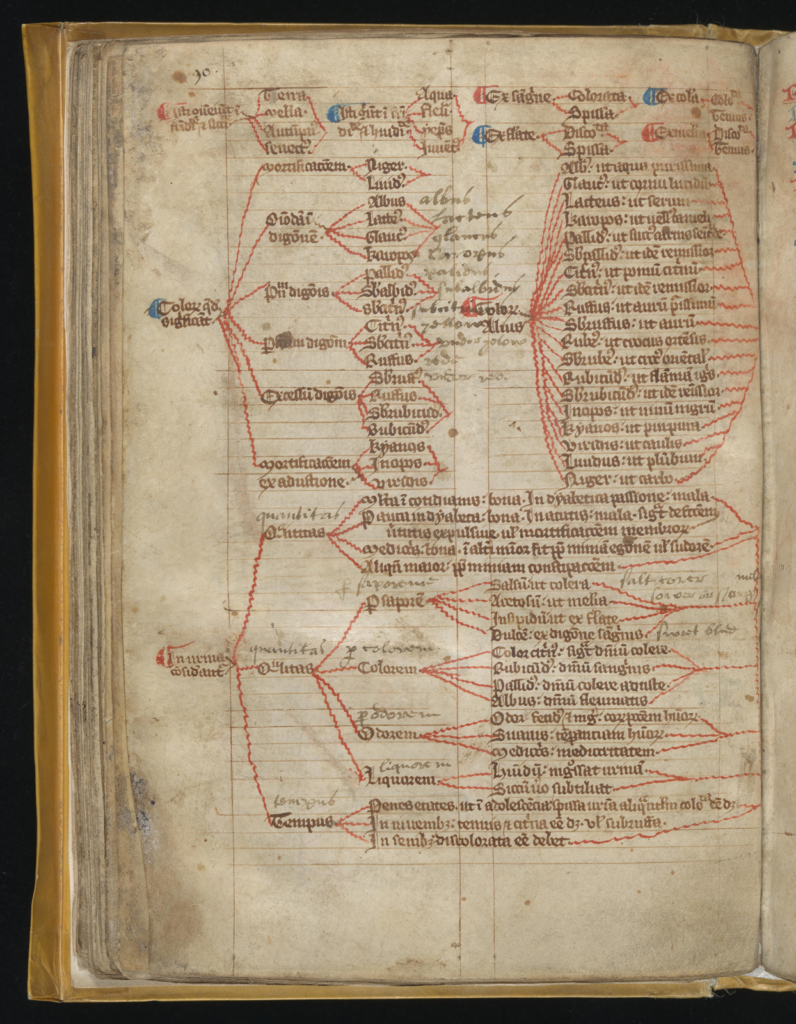
This kind of paratextual engagement with the text is visible in many different types of manuscripts. Yuval Harari also demonstrates how the textual and visual material recalls the act of knowing and doing. He discusses the relationship between text and paratext in medieval and pre-modern Jewish magic manuscripts and divides the types of paratexts into three categories: functional paratexts, performative paratexts (consisting of structural writing and signs, images and diagrams) and decorative paratexts. Functional paratexts include signs of how the books were used and interacted with by contemporary and later users. The final essay in this section concerns the transmission of De aspectibus, a treatise on optics, from handwritten manuscript to print. Mark Smith shows that when the text was first printed in 1572 it allowed for the text and diagrams to be interpreted and criticised in a manner that allowed scholars to progress the understanding of the function of optics. When the diagrams were closely tied to the text that they illustrated (and always present) and the text itself is divided and thus easier to read, the printed book ‘therefore presents none of the interpretive ambiguities inherent in the manuscripts’ (p 223). These six essays each concern ways in which texts and visual material was organised on the page in medieval and early modern Europe, and how this organisation in itself was important for how this information was received: whether this is the relationship of visual material to glosses, paratextual notes added later or diagrams made integral to the text.
The most diagrammatically rich environs for both medieval and modern audiences is undoubtedly the sciences, broadly defined. Medieval visualisations of the macrocosm, the world, the universe and time itself necessarily demanded a diagrammatic mode of communication. The most common diagram, found in medieval school books and scholastic treatises, was the rota, the circular wheel diagram. The foremost emblematic example of the use of these schemas are in Isidore of Seville’s De Natura Rerum (a treatise sometimes also referred to as Liber Rotarum, due to the many wheel diagrams). These circular diagrams explaining the interactions of the humors and the seasons, the elements and the passage of time, became a common iconographic trope for these subjects for decades to come.

The diagrams above, from a late twelfth century manuscript, demonstrate the harmonious relationships between the year and the seasons (above) and the elements, seasons and humoral balances which influences the prosperity of nations and dictates the health of individuals (below). The third section of the book concerns the graphic representations of scientific subjects: cosmology, astronomy, medicine and music, focusing both on the macrocosm and the internal microcosm of the human body.
Barbara Obrist maps the influence of the Greco-Roman astronomical tradition in early medieval Europe, the influence and subsequent changes to visual representations of the cosmos following the translation of Arabic sources into Latin. She demonstrates that the diagram, similar to an armillary sphere, functioned as a rhetorical or persuasive tool. Marcia Kupfer also discusses late antique and medieval visualisations of the world, as presented in maps. She demonstrates how the form of the map itself was shaped by the codicological context which it came to inhabit. She also discusses the development and use of cartographic images as visual exegesis in the medieval period. Following on from these two essays is Faith Wallis’s discussion on the transmission of Bede’s De temporum ratione: the renewed interest in this text in the twelfth century, the ways in which this text is paired and combined with other computistical treatises and elaborated on the paratextual decoration that elevate the texts themselves.
This section begins with a discussion of the macrocosm and ends with visualisations concerning the microcosm, and the interaction of the two. While these three essays concern how complex subjects like the structure of the universe, the world and its constituent parts, or indeed time itself, were rendered to allow contemporary reader-viewers to visualise subjects that are impossible to see, the two final essays in this section concern the theories rooted in the microcosm of the human body: music, which is either produced by voices or playing of musical instruments, and medicine. John Haines provides three case studies and discuss the ways in which music was visualised in medieval sources aimed at different audiences: from the practicing singer to the theoretical study of music. The diagrams discussed are both geometric and based on the human body and Haines notes that even the most theoretical understanding of music is based in the practical experience of singing and the ephemeral experience of listening to music. Meanwhile, practical medical images, such as the Zodiac Men and depictions of medical practitioners at work all convey messages about medical theories as well the practice of medicine itself.
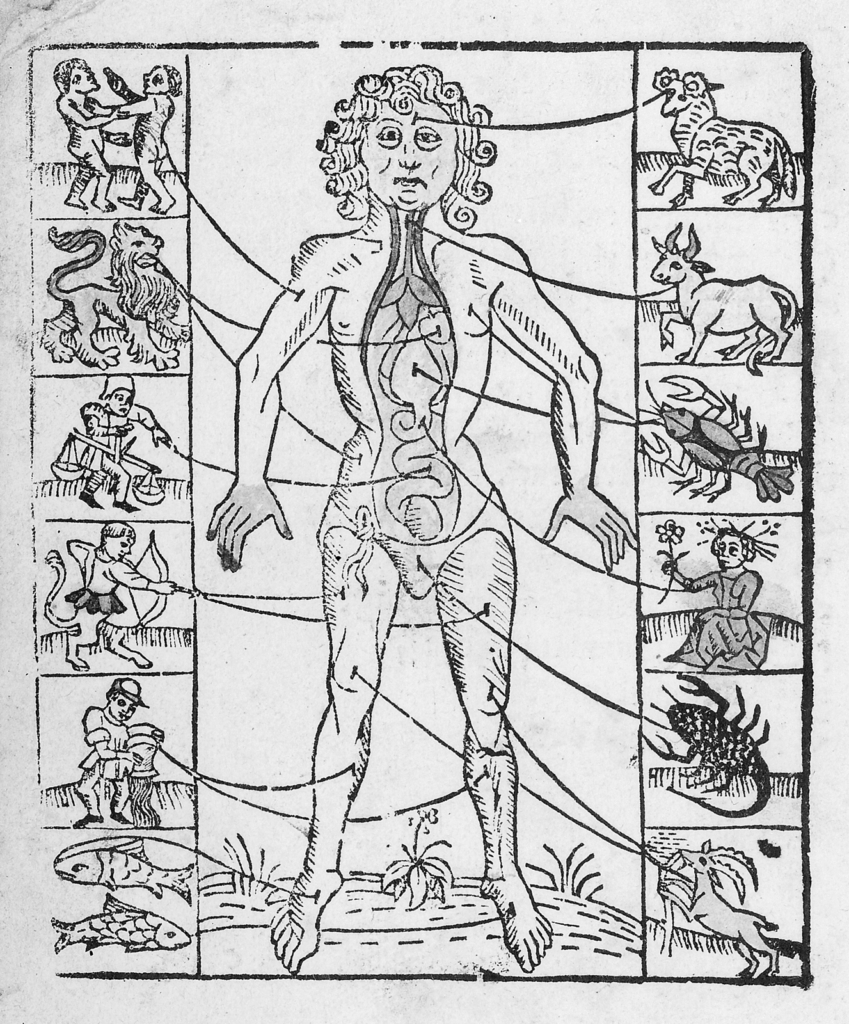
Peter Murray Jones charts the development and distribution of medical diagrams and other images in manuscripts and the translation and continuation of this tradition into print. The final section of this book concerns diagrammatic traditions, defined very broadly. Linda Safran brings to the fore material which has not been discussed before, namely Byzantine diagrams. She discusses the practical and theoretical schemas, as well as how they overlap. This kind of survey is of course essential to provide a background for further studies. Adam S Cohen also provides some broad framing for studies into the diagrammatic. He raises the question about the difference between a diagram and an image and proposes a spectrum spanning texts, diagrams and images. Included on this spectrum are diagrammatic images and imagistic diagrams, emphasising that the form, function and reader-viewer engagement with the page should inform how we define these terms. An interesting example of this practice can be found in the different renderings of the Zodiac Man diagram; some of these figures are exceedingly fine and perhaps mostly decorative, whereas others are much more utilitarian.
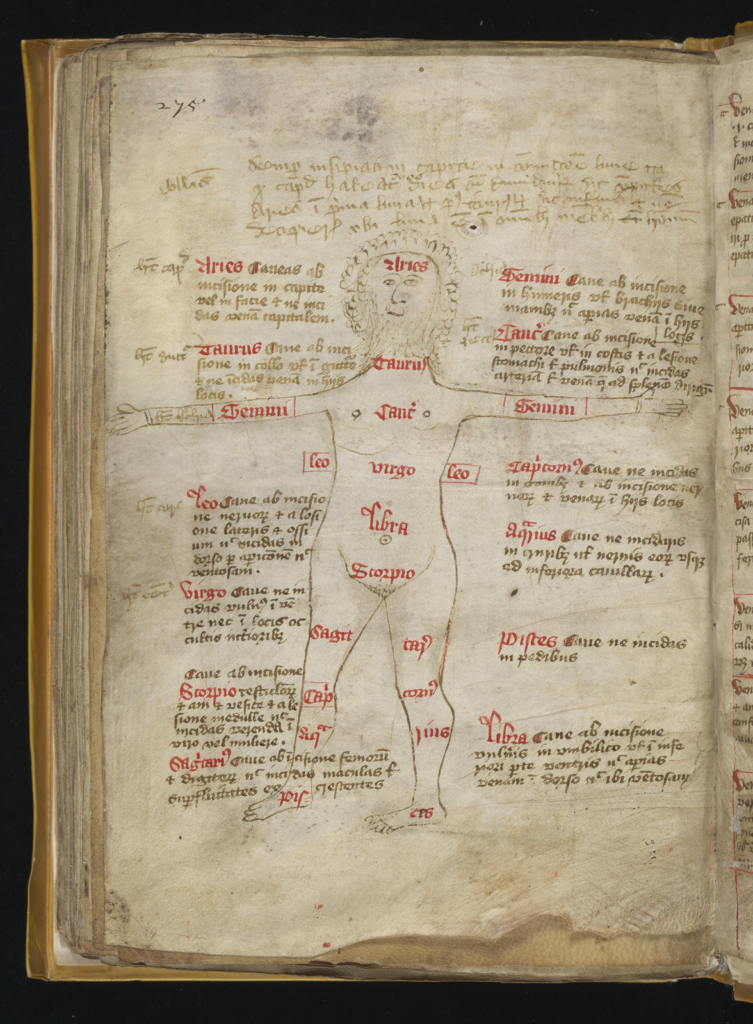
While the other studies in this volume concern material rendered on the two-dimensional page, Madeline H Cavinness challenges our perception of the diagrammatic by discussing the use of geometrical thinking and creative engagement with the architecture of a church as an exegetical template. Following this is Lucy Freeman Sandler’s essay on the functions of late medieval devotional manuscripts, discussing both pictorial and abstract diagrams as well as those in between. Sandler demonstrates that the grid-like structure of depictions of the arma Christi served to guide the meditative functions of the diagram itself and the Porphyrian tree served to demonstrate particular modes of thinking. Lastly, J H Chajes also discusses trees included in Jewish material and traces the development of the visual tradition of the ilanot: from entirely metaphorical to a visual presentation (popular also among Christian esoteric audiences). Chajes highlights how the Jewish visual tradition borrowed from contemporary scientific sources, as contemporary Christian artists and authors also did.
This volume demonstrates that the study of diagrams allows us to conceptualise not just what medieval and early modern theologians and scientists thought, but how they thought about these things. Diagrams, images and the organisation of text on the page could be imbued with meditative power and guide a penitent Christian reader through religious observation, or aid the recall of medical treatments, or religious doctrine. This impressive and expansive volume is an important contribution to the current study of diagrams, which sheds light on how different groups and audiences in medieval and early modern Europe have used the relationship of texts and visual material to convey messages and meanings beyond what is written and depicted. These essays break down barriers between text and images and begin to map the complex landscape in between.


